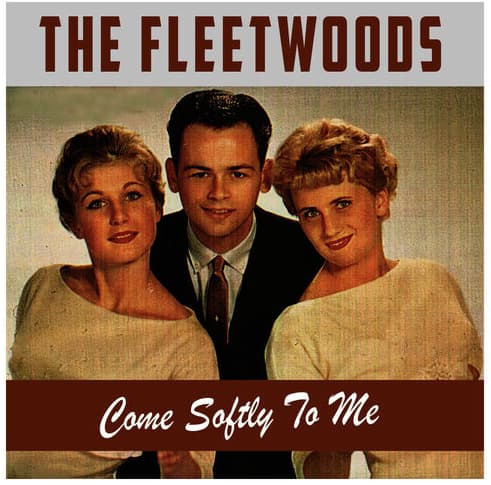
The Fleetwoods – “Come Softly to Me”: A Delicate Harmony That Defined an Era
The Fleetwoods’ “Come Softly to Me” is a quintessential doo-wop ballad that captures the innocence and romanticism of late 1950s pop music. Released in 1959 as their debut single, the song became an instant classic, reaching No. 1 on the Billboard Hot 100 and earning The Fleetwoods their place in music history. Written by the group’s members—Gretchen Christopher, Barbara Ellis, and Gary Troxel—the track is a masterpiece of understated emotion, tight harmonies, and minimalist production.
The song begins with an ethereal hum of harmonized voices, immediately setting a tone of intimacy and longing. This gentle opening pulls the listener into the track’s tender atmosphere, creating a sense of quiet anticipation. The instrumentation is intentionally sparse, with only subtle guitar strums and the faintest touch of percussion providing a backdrop for the group’s lush vocal interplay.
Lyrically, “Come Softly to Me” is a heartfelt plea for closeness and emotional connection. Lines like “Come softly, darling, come to me, stay” express a longing for love that feels pure and deeply personal. The repetition of the word “softly” underscores the song’s delicate tone, emphasizing the gentle, almost whispered nature of the narrator’s feelings. The lyrics are simple yet profoundly evocative, capturing the universal experience of yearning for intimacy.
The melody is lilting and memorable, with a soothing quality that reflects the song’s romantic theme. The chorus, “Come softly, darling, come softly to me,” is hypnotic and comforting, its repetition reinforcing the emotional pull of the song. The harmonies, a defining feature of The Fleetwoods’ sound, are flawlessly executed, creating a seamless blend of voices that feels both effortless and intricate.
Gary Troxel’s lead vocals are soft and unassuming, perfectly complementing the song’s gentle mood. His delivery is filled with warmth and sincerity, making the lyrics feel personal and heartfelt. The harmonies provided by Gretchen Christopher and Barbara Ellis add depth and texture, their voices weaving around Troxel’s in a way that feels almost like a conversation. This vocal interplay is the heart of the track, showcasing the group’s unique chemistry and musical artistry.
The production, intentionally minimalist, allows the vocals to shine without distraction. The lack of heavy instrumentation is a bold choice that sets the song apart from other hits of the time, giving it a timeless quality that still resonates with listeners today.
Since its release, “Come Softly to Me” has been celebrated as a standout track of its era, frequently included in compilations of classic doo-wop and early pop hits. Its success marked the beginning of The Fleetwoods’ career, which included several more hits, and cemented their reputation as pioneers of a softer, more introspective approach to vocal pop.
The song’s influence extends far beyond its chart success, inspiring countless artists and continuing to find its place in films, television, and commercials that evoke nostalgia for the simplicity and romance of the 1950s. Its enduring appeal lies in its ability to convey deep emotion with restraint and elegance, making it a favorite for fans of classic love songs.
In the end, “Come Softly to Me” is more than a doo-wop hit—it’s a timeless expression of love’s quiet, tender moments. The Fleetwoods’ delicate harmonies, combined with the song’s poetic lyrics and minimalist production, create a track that continues to captivate and inspire. For fans of vintage pop and vocal harmony, “Come Softly to Me” remains an enduring treasure.